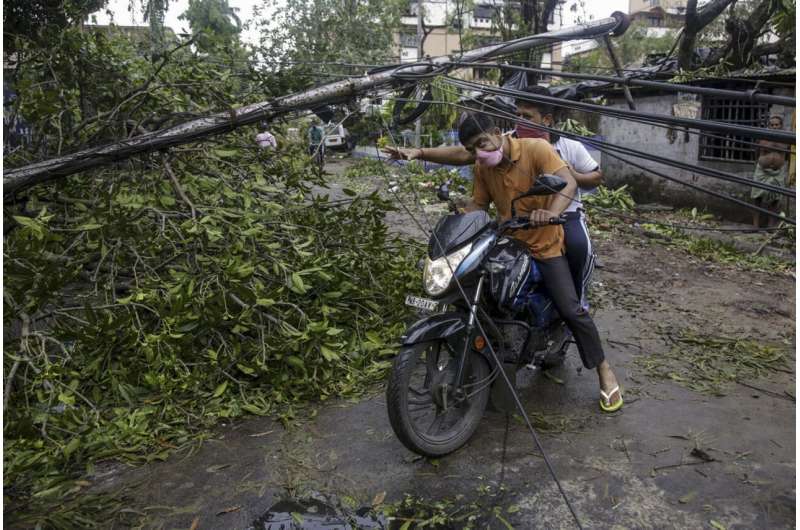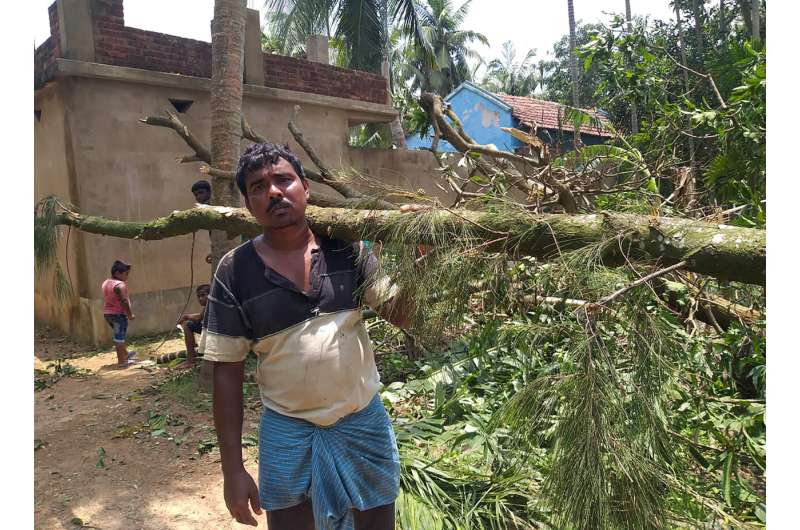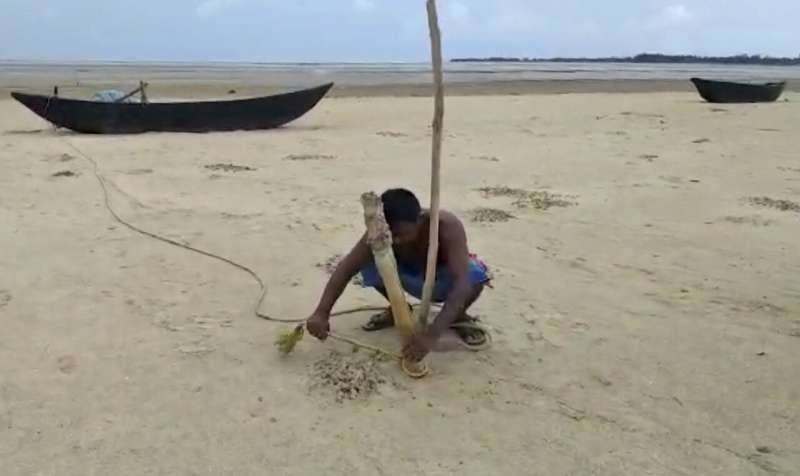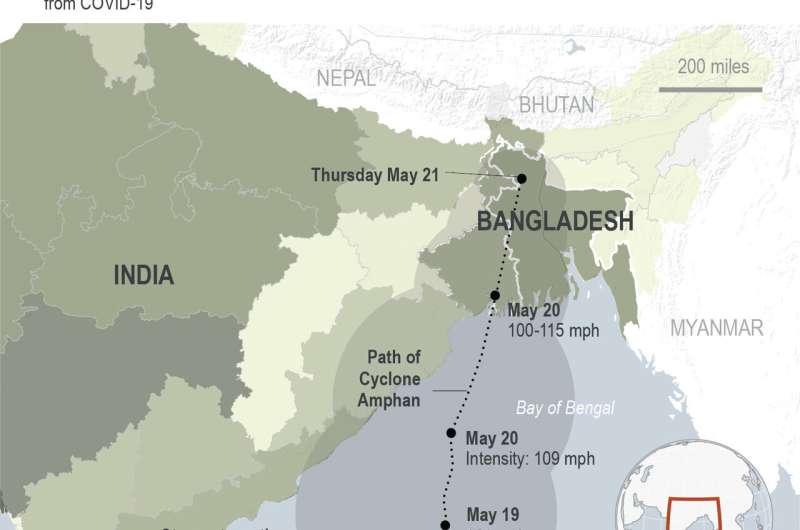Motorists make their way through damaged cables and a tree branch fallen in the middle of a road after Cyclone Amphan hit the region in Kolkata, India, Thursday, May 21, 2020. People forgot about social distancing and crammed themselves into government shelters, minutes before Cyclone Amphan crashed in West Bengal. The cyclone killed dozens of people and the coronavirus nine in this region, one of India's poorer states. Even before the cyclone, its pandemic response was lagging; the state has one of the highest fatality rates from COVID-19 in India. With an economy crippled by India's eight-week lockdown, and health care systems sapped by the virus, authorities must tackle both COVID-19 and the cyclone's aftermath.(AP Photo/Bikas Das)
Authorities began clearing roads and assessing damage on Friday after Cyclone Amphan barreled through coastal communities in eastern India and neighboring Bangladesh, killing more than 100 people and leaving millions displaced.
In India's West Bengal state, which bore the brunt of the storm that caused extensive flooding in its capital Kolkata, police and disaster response teams removed fallen trees and other debris, repaired communication lines and began moving hundreds of thousands of people out of shelters.
Amphan hit land Wednesday as the most powerful storm in the region in more than a decade, dumping heavy rain amid a battering storm surge.
West Bengal Chief Minister Mamata Banerjee said the cyclone should be treated as a national disaster and appealed for assistance from the federal government.
Prime Minister Narendra Modi surveyed the worst-hit areas of West Bengal and neighboring Odisha state by air.
It was Modi's first trip outside the national capital after imposing a coronavirus lockdown in late March.
"The country is already going through a crisis and during that time we have to deal with a cyclone," Modi said in West Bengal.
He announced a $195 million relief fund for the two storm-battered states.
U.N. Secretary-General Antonio Guterres expressed "solidarity with the people of India and Bangladesh as they face the impact of a devastating cyclone while also responding to the impacts of the COVID-19 pandemic," U.N. spokesman Stephane Dujarric said. "The United Nations stands ready to support these efforts."
-
A villager clears tree branches fallen in front of his house after Cyclone Amphan hit the region, at Baguranjalpai village in East Midnapore district in West Bengal state, India, Friday, May 22, 2020. People forgot about social distancing and crammed themselves into government shelters, minutes before Cyclone Amphan crashed in West Bengal. The cyclone killed dozens of people and the coronavirus nine in this region, one of India's poorer states. Even before the cyclone, its pandemic response was lagging; the state has one of the highest fatality rates from COVID-19 in India. With an economy crippled by India's eight-week lockdown, and health care systems sapped by the virus, authorities must tackle both COVID-19 and the cyclone's aftermath.(Debasis Shyamal via AP)
-
In this Wednesday, May 20, 2020, frame grab from video, a fisherman anchors his boat before Cyclone Amphan made landfall, at Baguranjalpai village in East Midnapore district in West Bengal state, India. People forgot about social distancing and crammed themselves into government shelters, minutes before Cyclone Amphan crashed in West Bengal. The cyclone killed dozens of people and the coronavirus nine in this region, one of India's poorer states. Even before the cyclone, its pandemic response was lagging; the state has one of the highest fatality rates from COVID-19 in India. With an economy crippled by India's eight-week lockdown, and health care systems sapped by the virus, authorities must tackle both COVID-19 and the cyclone's aftermath.(Debasis Shyamal via AP)
-
Wide areas of coastal India and Bangladesh are flooded and millions of people are without power after Cyclone Amphan struck the region.;
The cyclone has raised fears it could exacerbate the spread of the coronavirus in overcrowded emergency shelters.
In an initial assessment, officials in Bangladesh said the cyclone caused about $130 million in damage to infrastructure, housing, fisheries, livestock, water resources and agriculture. The full extent of the damage along India's eastern coast was not immediately known.
Authorities in both countries managed to evacuate more than 3 million people before Amphan struck.
At least 80 people were killed in West Bengal state and two deaths were reported in Odisha state. Broadcasters in Bangladesh reported 22 deaths.
© 2020 The Associated Press. All rights reserved. This material may not be published, broadcast, rewritten or redistributed without permission.



























